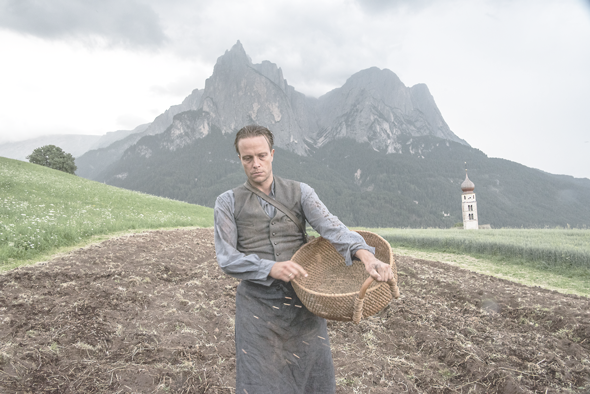
Third in a series
In the philosophy and film course that I teach at St. John’s University, I rely on the theory of art of the great Thomist philosopher, Jacques Maritain, to give the students some sense of the ingredients that make up a great film or indeed any great work of art. When I was an undergraduate student in philosophy many years ago, Maritain was referred to in just about every course that I took. I have found his theory of art one of his special contributions. Maritain’s insights, I think, have helped me to interpret novels, plays and films.
Maritain thought that there were two components to any work of fine art, components he called the matter and the creative intuition. The matter is easy to understand. It refers to the material that is used in making the work of art. So the matter for painting would be canvas and paint; for novels character, plot and dialogue. For film, there is seemingly an endless number of material components as is obvious when at the end of a film credits are shown indicating all the artists who contributed to the making of the film.
For an artist to produce good art, he or she must have some skill with matter. Is the artist born with that skill or does the artist achieve it through practice? Because I don’t have the skill, I am just guessing that the great artist is someone like the great athlete. The great artist’s skill is probably due to practice and a special gift that some artists may not have.
The creative intuition is not so easy to understand. In fact, I think it is impossible to understand completely, because it involves several mysteries such as the mystery of the person, the mystery of being and the mystery of beauty. The creative intuition is an insight into reality that moves the artist to create the work.
Probably all of us have insights into reality, but the artist’s insight or intuition drives him or her to produce a work of art. In my life, I have had few, if any, creative intuitions.
When an artist has a profound creative intuition and successfully incarnates that intuition in the work of art, what is created is a masterpiece. I think that Terrence Malick has successfully created a masterpiece with his new film, “A Hidden Life,” the story of Franz Jaggerstatter, an Austrian farmer who was martyred during the Second World War because he refused to take the oath of loyalty to Hitler.
Years ago, Father Andrew Greeley wrote the following in America magazine:
“Human artists see things more clearly than the rest of us. They penetrate into the illumination of being more intimately than do the rest of us … The artist is a sacrament maker, a creator of emphasized, clarified beauty designed to make us see. Artists invite us into the world they see so that we can go forth from that world enchanted by the luminosity of their work and with enhanced awareness of the possibilities of life.”
In his marvelous “Letter to Artists,” St. Pope John Paul wrote the following:
“God therefore called man into existence, committing to him the craftsman’s task. Through his ‘artistic creativity’ man appears more than ever ‘in the image of God,’ and he accomplishes this task above all in shaping the wondrous ‘material’ of his own humanity and then exercising creative dominion over the universe which surrounds him. With loving regard, the Divine artist passes on to the human artist a spark of his own surpassing wisdom, calling him to share in his creative power.”
I hope that Terrence Malick is familiar with St. Pope John Paul’s letter because I think with his masterpiece, he has done precisely what the Holy Father described as the artist’s task.
“A Hidden Life” is one of the most visually beautiful films I have ever seen. Providing viewers with gorgeous scenes of mountains, rivers, forests and hills, Malick, I think accomplishes two goals: first the contrast between the magnificent creation of nature that God has provided and the horrible, immoral world of Hitler and his followers, and second the idyllic world of martyr Franz Jaggerstatter with his life on his farm with his loving wife and three children contrasted with his last days in a concentration camp. By showing in detail the beautiful family life that Franz had, Malick underlines Franz’s heroism and commitment to Christ.
Running approximately three hours, “A Hidden Life” is a demanding film. But any demand the film makes on viewers is justified. I cannot think of another film that so challenges a viewer’s conscience.
Father Lauder is a philosophy professor at St. John’s University, Jamaica. He presents two 15-minute talks from his lecture series on the Catholic Novel, every Tuesday at 9 p.m. on NET-TV.
